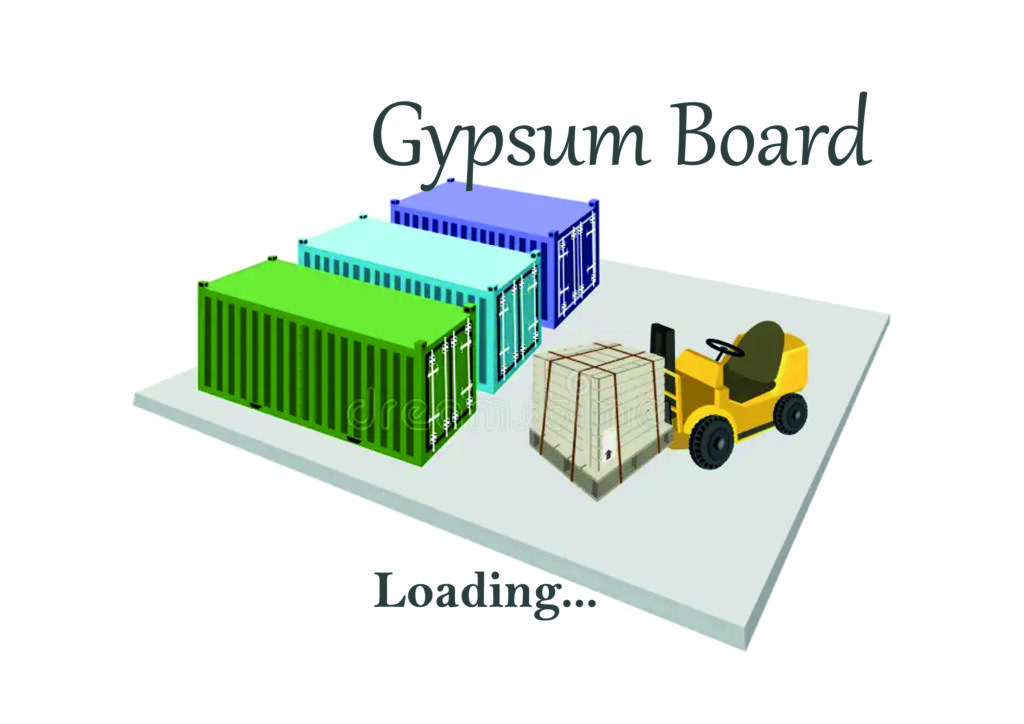
Loading gypsum board, also known as gypsum board, into a shipping container requires careful planning to ensure safe transportation and prevent damage. Due to their weight and delicate structure, improper transportation of gypsum board can lead to cracks, breakage, and inefficient use of space. This article outlines best practices, basic steps, and safety tips for loading gypsum board into a container.
Prepare the Container For Gypsum Board
Check the Container
Check the container for cleanliness, structural integrity, and dryness before loading. Gyspum boards are very sensitive to moisture. Therefore, the interior of the container should be free of leaks or puddles.
Place Protective Material
Place plywood or other protective material on the floor of the container. This will help minimize impact during transportation and prevent damage to the gypsum boards.
Arrange the Loading Equipment
Forklift or Pallet Truck
Use a forklift or pallet truck to move the gypsum boards from the field to the container. Check that the equipment can handle the gypsum boards and pass through the container door.
Safety Equipment
It is important that all field workers wear gloves, hard hats and steel-toed boots. Safety is very important when handling heavy and delicate materials such as gypsum boards.
Loading Gypsum Boards Into Container
Load in Sections
Gypsum boards are usually loaded in bundles in the container area. Begin loading by placing the first stack against the wall of the container. Be careful not to tilt or shift the boards.
Use Vertical and Horizontal Loading Techniques
- Vertical Loading: To make the most efficient use of space, vertical loading places the gypsum boards vertically along the wall of the container.
- Horizontal Loading: If vertical loading is risky or does not fit the container layout, use horizontal loading. Place the boards horizontally; but be careful not to stack them too high to avoid damaging the boards below.
Secure Each Stack
After each section is loaded, secure the stacks with tie-down straps. This prevents movement during transport and keeps the gypsum boards stable. However, be careful not to over-tighten the straps as excessive pressure can damage the gypsum boards.
Fill Gaps
Add Cushioning
Fill the gaps between the stacks of gypsum boards with padding such as foam or air cushions. This prevents movement and damage from impacts during transport. The cushioning also prevents the boards from shifting.
Do a Final Check
Check Stability
Check loaded containers for loose parts or areas at risk of movement. Make sure the straps and padding are adjusted as necessary
Check Water Resistance
Since gypsum boards are sensitive to moisture, make sure the container door is tightly closed. If possible, add moisture absorbing packs to increase water resistance.
Conclusion
Gypsum boards should be loaded into the container correctly and with great care. Loading requires proper planning, proper equipment and strategic packaging techniques. By following these steps, you can protect gypsum boards from damage. At the same time, you can reduce the risk of accidents. And you can use the container space efficiently and load it comfortably.